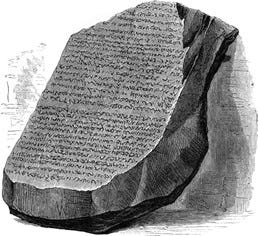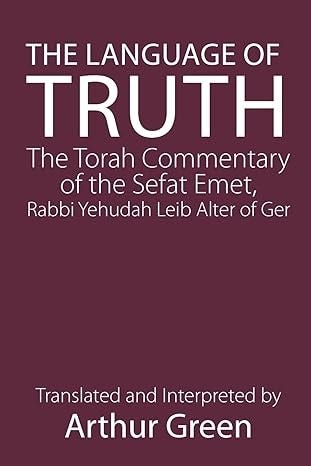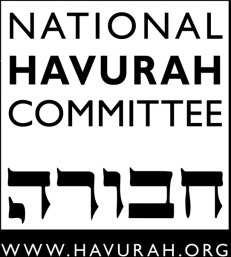Tachat ha-Shemesh – Under the Sun
Weekly Torah Insights from Miami
Tazria-Metzora is the Torah portion most everyone loves to hate. Divrai Torah on this parshah range from NOTHING AT ALL to SOMETHING SO PROFOUND IT CHANGED MY LIFE.
In most years Tazria and Metzora are combined. Cynics suggest this is so we can get through them in a single week. Here are the abstracts of each as they appear in Sefaria.org:
Tazria (“She Bears Seed”) opens by describing the purification process for a woman after childbirth. It then describes different forms of tzara’at, a discoloration condition on skin or clothing, and the requirement of an infected person to dwell alone outside the camp and be inspected by a priest.
Metzora opens by describing the purification process and accompanying sacrifices for one infected with tzara'at, a discoloration condition on the skin, clothing, or house. It then describes the process of treating a house infected with tzara'at and the ritual impurity generated by certain bodily discharges.
Let’s begin with the NOTHING AT ALL talk delivered by a Rabbi on a Shabbat morning to a congregation that came not for the service but for the bar mitzvah.
“Today’s Torah portion is Tazria-Metzora, from the book of Leviticus. Leviticus is in the Torah. Also in the Torah is the story of Abraham and Isaac. Let me tell you a story about Abraham and Isaac.”
That might seem funny at first, but likely the congregation benefited more from a substantial teaching on Abraham and Isaac than a skin-deep examination of Tazria-Metzorah.
That was my introduction to rabbinic teaching 50 years ago. As I developed proficiency with text, I progressed to rabbinic commentaries on the verse:
זֹאת תִּהְיֶה תּוֹרַת הַמְּצֹרָע
Zot ti-hi-yeh torat ha-mi-tzo-ra
This will be for you the law concerning the leper (Leviticus 14:2).
I learned that the Rabbis almost universally associated the Hebrew word for leper – ha-mi-tzo-ra – with ha-motzi shem-ra, one who brings out a bad name, an idiom for libel or slander. From that it is short jump to lashon ha-ra to include all evil speech. Rather than teach on the topic of leprosy, the Rabbis taught on these verses from Psalms 34:13-15:
מִי־הָאִישׁ הֶחָפֵץ חַיִּים אֹהֵב יָמִים לִרְאוֹת טוֹב: נְצֹר לְשׁוֹנְךָ מֵרָע וּשְׂפָתֶיךָ מִדַּבֵּר מִרְמָה: סוּר מֵרָע וַעֲשֵׂה־טוֹב בַּקֵּשׁ שָׁלוֹם וְרָדְפֵהוּ
Who is the one who desires life, who longs for many days, to see good? Then guard your tongue from evil and your lips from speaking guile. Turn from the bad and do good, seek shalom and pursue it.
That teaching is so prevalent that the word metzora has become associated more with evil speech than leprosy.
Then I found Arthur Green’s Language of Truth published in 1998. The subtitle is: The Torah Commentary of the Sefat Emet, Rabbi Yehudah Leib Alter of Ger.
For many years I had been teaching rabbinic texts in translation. By 1998 I had some rabbinic Hebrew but not the fluency or the time to provide my own translations, so I was limited to what others provided for me, such as Art Green’s The Language of Truth – the Sefat Emet.
The Sefat Emet is the massive compilation of the Torah teachings of the Polish Rabbi Yehudah Leib Alter (1847-1905), known as the Gerrer Rebbe. It spans more than 30 years of work. Arthur gleaned several passages from each weekly Torah portion into a single volume. That alone was a significant contribution to the body of Hasidic teachings available in English. But he also attached the original Hebrew, and… And this is what astonished me. For those occasional passages the Sefat Emet wrote in Aramaic, Arthur converted the Aramaic to Hebrew.
For whom did he do this? Who might have enough Hebrew to benefit from the original text, but not the capability to manage the Aramaic? How many such people could there be in the world? And then I realized – he was writing for me!
When it came time to prepare new materials on Tazria-Metzora to share with our Torah learning table, I opened The Language of Truth expecting the Sefat Emet to be teaching on the conventional theme of evil speech. What I found intrigued me so much I turned to the Hebrew and followed it phrase by phrase until I felt comfortable adding the Hebrew text to the English for the table learning, and then I taught from the Hebrew.
That passage became my Rosetta Stone, the key to freeing myself from the tyranny of translations. (More on that tyranny later.)
This is the verse on which the Sefat Emet comments, Levticus 13:2:
אָדָם כִּי־יִהְיֶה בְעוֹר־בְּשָׂרוֹ שְׂאֵת אוֹ־סַפַּחַת אוֹ בַהֶרֶת וְהָיָה בְעוֹר־בְּשָׂרוֹ לְנֶגַע צָרָעַת וְהוּבָא אֶל־אַהֲרֹן הַכֹּהֵן אוֹ אֶל־אַחַד מִבָּנָיו הַכֹּהֲנִים׃
When a person has on the skin of the body a swelling, a rash, or a discoloration, and it develops into a scaly affection on the skin of the body, it shall be reported to Aaron the priest or to one of his sons, the priests.
And this is from the Sefat Emet. The Hebrew is copied from Sefaria. It is the rebbe’s tenth teaching on Tazria written in 1881. The translation is mine.
דהנה הפסוק תולה הנגעים בעור. ע"פ מ"ש ויעש ה"א לאדם כו' כתנות עור. ובמד' כתנות אור כו'. כידוע שע"י החטא הוצרך להתלבש בלבוש הגס משכא דחוויא. שמשם יש כל הגשמיות. שמקודם הי' רוחני.
This verse concerns itself with plagues (afflictions) of the skin. It relates back to what is written when the Holy One commanded Adam to make for himself a garment of skin (עור / ‘or). In the Midrash you find it written as a garment of light (since the word for light (אור / o’r) is pronounced the same as the Hebrew word for skin). As is known, it was because of the transgression (of eating the forbidden fruit) that it was necessary that Adam be clothed in such a coarse garment. This is the source of all base corporeality. Before (that transgression) we were in a spiritual existence.
We learn from Genesis that God made a garment of skin for Adam. We are likely to imagine a leather coat fashioned together from animal skins. But playing with the similarity of the Hebrew words for skin and light, The Sefat Emet suggests that Adam was originally a creature of light. After he transgressed, he acquired skin – not leather, but skin like ours. Before that, we did not have skin. We were originally creatures of light! And now we’re covered in our coarse skin with all its dermatological issues. Can we ever return to being creatures of light?
כמ"ש לעתיד וכמו שהיו בנ"י מוכנים להיות במתן תורה. ולכן במרע"ה כ' קרן עור פניו. שתיקן כל זה העור. עד שהאיר באספקלריא המאירה. ואנחנו לא נשארנו בזו המדרגה. לכן חזרו הנגעים כמ"ש במד' שע"י החטא חזרו למומים ע"ש
There was a time in the future when the Israelites refined themselves to receive the Torah. That’s why Moshe our teacher was described (as descending from Sinai) with his skin radiant. He had refined the very nature of skin until it shone like a resplendent mirror. But we did not remain at that level (because of the sin of the golden calf). Therefore, the plague (of coarse skin) returned. It is written in the midrash, because of that sin, defects returned.
Moses became a creature of light when he stood with the Holy One at Sinai. He descended radiantly, with an aura. As he approached the golden calf, that aura faded. But still if a human managed it once, might a human do it again?
וידוע ג"כ שיש בעור נקבים נקבים להודיע שיש ביכולת האור להעביר קליפות הללו. רק ע"י החטאים מסתתמין אותן הנקבים והחושך יכסה ארץ. וזה נגע צרעת סגירו. ולכן ניתן הטהרה לאהרן הכהן ובניו שהוא הי' המתקן חטא העגל כנ"ל
It is also known that there are holes and holes (pores) in the skin. This is so you should know it is possible for the light to shine through these imperfections. It is only because of our sins that these pores are clogged, and that darkness covers the earth. That’s why it says of the plague of leprosy that it clogs things up. Therefore, Aaron the priest and his sons were given the power of purification to rectify the sin of the golden calf.
We are still creatures of light even if we are covered in coarse skin. But there is hope for us. Our skin has pores. Those pores become clogged by our transgressions. Through repentance we can open those pores. Then the light can shine through. We experience that light when we engage with our study partners in profound Torah learning.
This teaching of the Sefat Emet became the Rosetta Stone that freed me from the tyranny of the translators. Why tyranny? Because translators determine the path of one’s learning. They choose for us which passages to learn.
How do we free ourselves? Best of course is to learn the Hebrew. The second best would be to have a translation of an entire text, rather than a collection of passages. But that’s a massive undertaking for a translator. Still, several of our scholars have done just that.
In 2021 Stanford University Press published Arthur Green’s translation of the Me’or Einayim: The Light of the Eyes.
In 2001 Betsalel Philip Edwards provided a translation of the Ishbitzer rebbe’s Living Waters: The Mei HaShiloach. (He has made that translation available on Sefaria.)
Still there is a difficulty with all translations. Each is a commentary. Every translator has a philosophy of translation, a bias that inclines him or her toward a regressive or progressive approach. So, whenever I teach, I encourage participants to bring as many different translations as possible and not to rely on mine.
You may have noticed how frequently I refer to Sefaria.org. That’s because Sefaria is the new instantly available, searchable, copyable Rosetta Stone for anyone who desires to take the next step forward.
Sefaria provides a quantum leap forward in Torah learning. It is the work not of a single authority, but of a community. And that community is open to all.
The NHC Summer Institute 2025 will take place Monday, July 28th - Sunday, August 3rd at the Pearlstone Retreat Center in Reisterstown, Maryland. I hope to see you in person this summer.
The National Havurah Committee (NHC) is a network of diverse individuals and communities dedicated to Jewish living and learning, community building, and tikkun olam (repairing the world). For more than 40 years, the NHC has helped Jews across North America envision a joyful grassroots Judaism. The NHC is nondenominational, multigenerational, egalitarian, and volunteer-run.






